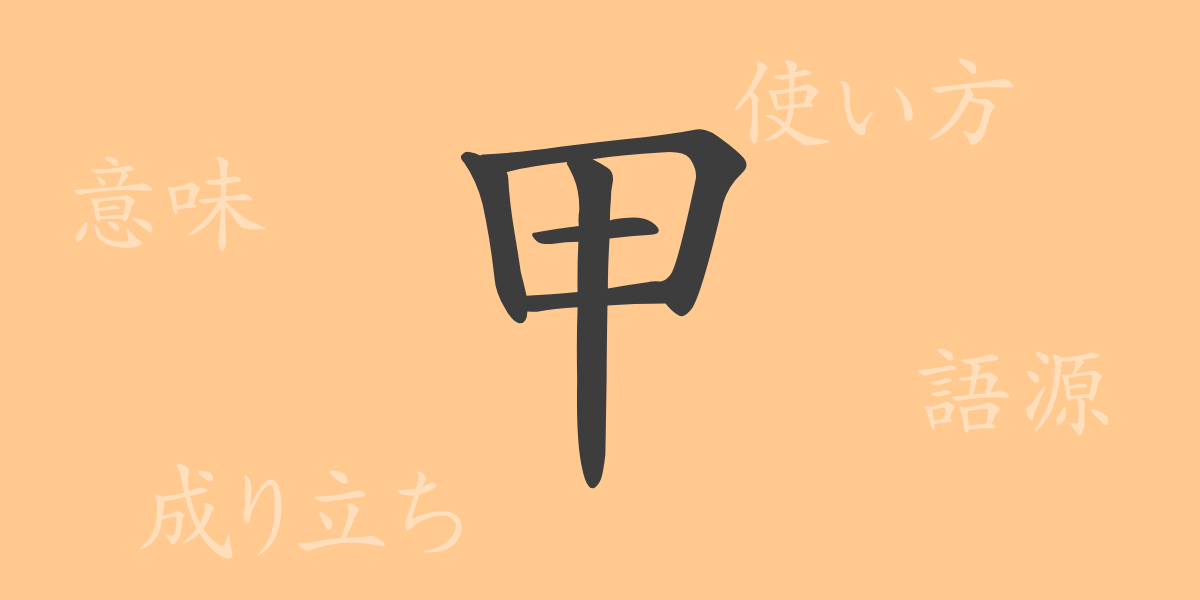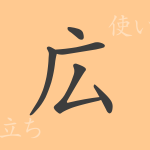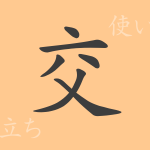Japanese kanji encompasses a vast array of characters, each with its own unique history and meaning. Among them, “甲(こう)” stands out as particularly intriguing. This kanji has been in use since ancient times and is frequently encountered in various contexts of daily life as one of Japan’s 常用漢字(jouyou kanji). In this article, we will explore the origins, meanings, usage, readings, and idiomatic expressions involving “甲(こう)”, delving into its rich and multifaceted significance.
Origins of 甲 (Etymology)
The origins of the kanji “甲(こう)” can be traced back to ancient China. It finds its roots in oracle bone script, where it was depicted as a pictogram resembling a turtle shell. The shape of this character mimics the shield-like form of a turtle’s carapace. In ancient China, turtle shells were used in divination, making this character significant in ancient texts and practices.
Meanings and Usage of 甲
The kanji “甲(こう)” carries multiple meanings. Firstly, it can refer to armor or protective gear, as seen in the term “甲冑(かっちゅう)”, meaning armor. In astronomy, it signifies the first of the twelve Earthly Branches. Additionally, it is used to denote rankings, often seen in sequences like “甲・乙・丙・丁” (first, second, third, fourth). These diverse applications are deeply rooted in Japanese culture and language, demonstrating the kanji’s versatility.
Readings, Stroke Count, and Radical of 甲
The kanji “甲(こう)” is straightforward in its readings and structure.
- Readings: The on’yomi (音読み) is “コウ(こう)”, and the kun’yomi (訓読み) is “きのえ(kinoe)”.
- Stroke count: “甲(こう)” consists of 5 strokes.
- Radical: It belongs to the “田(た、でん)” radical family, but “甲(こう)” itself can also serve as a radical in other characters.
Common Phrases, Idioms, and Proverbs Using 甲
There are numerous idioms and expressions that include the kanji “甲(こう)”. Here are a few examples:
- 甲斐甲斐しい(かいがいしい): This expression describes someone who is diligent and attentive in their efforts.
- 甲子園(こうしえん): The famous stadium where the National High School Baseball Championship is held.
- 甲乙つけがたい(こうおつつけがたい): This phrase means that two things are so excellent that it is difficult to determine which is better.
Summary of 甲
The kanji “甲(こう)” is a character with a simple yet profound history and diverse meanings. While it may often be overlooked in daily life, this article has shed light on the rich expressions and historical context associated with “甲(こう)”. Each kanji in the Japanese language carries its own story, and by understanding “甲(こう)”, we gain a new perspective on the depth and nuance of words in Japanese.

























